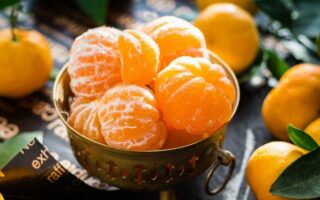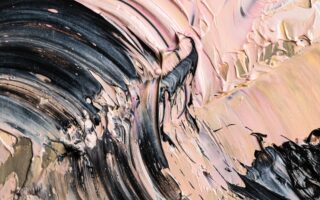Author: Jigyasa Trivedi
Catergory: Veden/Yoga
Introduction
In Braj, Holi is not only a holiday but also a way of life. The festivities in Braj are an exceptional fusion of custom, culture, and devotion. The Holi celebrations last for several days and are very enthusiastic and joyful among the locals. Some of the distinctive and traditional ways that Braj celebrates Holi include the Lathmar Holi, the throwing of flowers, and the breaking of earthen pots. People from all over India and the world are welcome to join in the vibrant and joyful celebrations of Holi in Braj, which are not just open to the locals. In Braj, Holi is a way to remember Lord Krishna’s sense of humour and to celebrate the triumph of good over evil.
.
.

https://en.wikipedia.org/wiki/Holi
Holi, the festival of colours, is celebrated with great joy and enthusiasm throughout India. But none compare to the festivities in Braj, a region in the Uttar Pradesh state of northern India. Lord Krishna was born and raised in Braj, also referred to as the Land of Lord Krishna. According to legend, Holi was first celebrated in Braj, where it has since become an integral part of the local culture and tradition. The importance of Holi in Braj and its celebration will be discussed in this article.
The Holi celebrations in the “Braj” region, which includes Mathura, Vrindavan, and Barsana, are regarded as some of the most vibrant and joyful in the nation. Numerous tourists and devotees from all over India and the world attend the multi-day celebrations in these cities.
The Lathmar Holi, celebrated in the towns of Barsana and Nandgaon, about 50 km from Mathura, the birthplace of Lord Krishna, is the main Holi celebration in Braj. The Lathmar Holi is a distinctive and traditional way of celebrating the festival, in which the men attempt to defend themselves by wielding shields while the women beat the men with sticks. Based on the Radha and Krishna legend, wherein Lord Krishna travelled to Barsana to play Holi with Radha and her friends, this custom was created. But the women of Barsana teased him and drove him away, chasing him with sticks. Then, the men of Nandgaon, the village of Lord Krishna, came to his aid, and a playful brawl ensued between the men and women that is recreated each year during Lathmar Holi.
.
.

https://en.wikipedia.org/wiki/Lathmar_Holi
.
.
The rangbhari Ekadashi, when the entire city is covered in colours and people dance to the beat of dhol while singing Holi songs, is the culmination of the Holi celebrations in Mathura and Vrindavan. The famous “Laddu Holi,” in which the women of Barsana play Holi without the use of colours, marks the conclusion of the festivities. The ghee, sugar, and saffron-made laddus are hurled at the men who attempt to play Holi with them.
A special fusion of culture, tradition, and devotion can be found during the Holi celebrations in Mathura, Vrindavan, and Barsana. People from all walks of life gather to share in the joy and happiness as the festivals are observed with great fervour. Every traveller should put the Holi celebrations in these cities on their bucket list because they are an unforgettable experience.
Significance of Holi in Braj
In Braj, Holi is more than just a holiday; it is a way of life. It is observed with great zeal and devotion because it is thought that Holi in Braj brings happiness, luck, and prosperity. The significance of Holi in Braj can be attributed to Lord Krishna’s life because he is revered as the area’s primary deity. According to Hindu mythology, Lord Krishna was a cheeky youngster who enjoyed pulling practical jokes on the Braj gopis (milkmaids). He frequently daubed colours all over them and doused them in water.
Holi is celebrated in Braj as a way to remember Lord Krishna’s joyous personality. It is also thought to be a celebration of good triumphing over evil. The myth claims that Lord Krishna vanquished the demon king Kansa and liberated his subjects from his rule. Holi in Braj is an expression of this victory.
Preparations for Holi in Braj
Weeks prior to the festival, Holi preparations start in Braj. The local markets are stocked with treats, festive decorations, and other festive items, and the streets and temples of Braj are decked out with bright lights and flowers. Making sweets and delicacies like gujiya, mathri, and dahi bhalla is how the locals begin preparing for the festival. Additionally, they make coloured water known as gulal by combining water and natural dyes.
Celebrations of Holi in Braj
The burning of a bonfire to symbolise the triumph of good over evil kicks off the Holi festivities in Braj. On the eve of Holi, a bonfire is lit, and people congregate around it to pray and ask the gods for blessings.
.
.

https://en.wikipedia.org/wiki/Holika_Dahan
.
.
In the town of Nandgaon, where Lord Krishna spent his formative years, the second day of Holi—known as Panchami—is commemorated. The Nandgaon women dress up in their traditional garb and go to the temple of Lord Krishna to ask for his blessings. They carry pots of coloured water, which they hurl at the villagers’ men as they make an effort to defend themselves with shields.
Gopashtami, the third Holi day, is observed in remembrance of Lord Krishna’s devotion to cows. People visit the temples to pray and worship the cows while dressing up as cows and wearing cow costumes.
Rang Panchami, or the fourth day of Holi, is the day when people play with colours and water. People visit their friends and family to exchange sweets and greetings on this joyful and festive day.
There are numerous other distinctive and traditional ways to celebrate Holi in Braj in addition to the Lathmar Holi. Flowers are thrown during the celebrations in Vrindavan, the town where Lord Krishna spent his formative years. The worshippers sing devotional songs, throw flowers at one another, and pray to Lord Krishna.
The celebrations are marked by the breaking of earthen pots filled with coloured water in Gokul, the town where Lord Krishna was born. The young boys and men attempt to break the pots by creating human pyramids, which are hung high above the streets.
.
.

https://en.wikipedia.org/wiki/Dahi_Handi
.
.
In Braj, people from all walks of life celebrate Holi. People travel to Braj from all over India and even from other countries to take part in the distinctive and colourful Holi celebrations. The people of Braj welcome the visitors with open arms because the celebrations there are more than just a festival.
This article has also been published on the German Website: https://www.tattva.de/holi-das-fest-der-farben/




